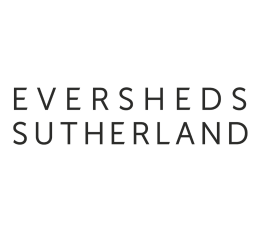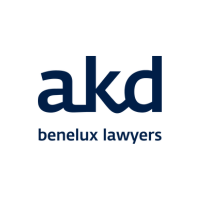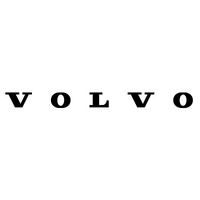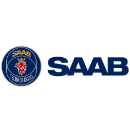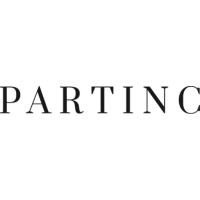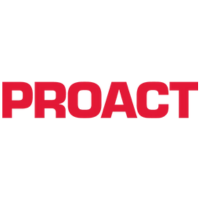Swedish VS Dutch business culture
We are pleased to present an insightful blog post by our member company, Beyondo, which sheds light on Swedish vs. Dutch business culture.
Personal experiences and team insights
Entering a new market can be both exciting and challenging, especially when it involves understanding the local business culture. As a Swede who has lived in The Netherlands, I have personally experienced the nuances of both cultures. At Beyondo, deals with these similarities and differences every day, using our diverse backgrounds to improve communication. This guide highlights the key differences and provides examples to help you understand these distinct environments.
Swedish business culture
Swedish business culture is built on core values of equality, trust, and inclusivity. Companies often have flat hierarchies where managers act more as guides or coaches rather than authoritative figures. Decision-making is consensus-driven, meaning team input is vital. This approach ensures that all voices are heard and valued. An important cultural concept to understand is Jantelagen, which emphasizes modesty and equality. It’s about not standing out or boasting, and it influences how Swedes interact in both personal and professional settings.
Dutch business culture
In contrast, Dutch business culture is known for its directness and efficiency. The Dutch appreciate straightforward communication and quick decision-making. Meetings are often shorter and more to the point, focusing on achieving specific goals. For instance, a Dutch business meeting might quickly outline the key points and move directly to action items, reflecting their goal-oriented approach.
Networking norms
Networking is a crucial part of doing business in both Sweden and The Netherlands, but the approaches differ. In Sweden, networking is essential but takes time. Building trust and personal connections is key, so follow up after meetings and events. This helps to establish long-term relationships, which are highly valued in Swedish business culture. Networking often revolves around informal settings like coffee breaks, known as These breaks are more than just a chance to grab a coffee; they are an integral part of building relationships and gaining insights.
In The Netherlands, networking is also important but tends to be more structured. Dutch professionals often network during formal events, business lunches, or industry conferences. The Dutch value efficiency, so networking events are typically well-organized with clear objectives. .
Work-Life balance and personal boundaries
Sweden is renowned for its strong emphasis on work-life balance. The concept of “lagom,” meaning “just the right amount,” promotes a balanced approach to work and personal life. Swedes value their time and prefer not to be contacted outside of work hours unless necessary. This respect for personal boundaries fosters a healthy and productive work environment. .
The Netherlands also values work-life balance, but the approach can be slightly different. Dutch employees often enjoy flexible working hours and a pragmatic approach to work. However, the Dutch are known for their directness and may blend work and personal life more fluidly. .
Do’s and Don’ts in Swedish business
When doing business in Sweden, there are several do’s and don’ts to keep in mind:
Do be punctual and adopt the meeting culture, as meetings are a big part of business here. Come well-prepared and adjust to the longer decision-making process. Take the time to meet with your Swedish counterparts more than once and respect their personal space.
 Don’t push for quick decisions or use aggressive sales tactics. Avoid being overly hierarchical and don’t overlook the importance of fika, the traditional coffee break. Also, avoid comparing Sweden to its Nordic neighbours and don’t be surprised if your Swedish counterparts take a few moments to respond. Instead, use consultative selling, appreciate Sweden’s unique culture and identity, highlight the value and benefits of your proposals, and allow for silence without interrupting.
Learn more about the do’s and don’ts of doing business in Sweden and The Netherlands in Beyondo’s full .
Don’t push for quick decisions or use aggressive sales tactics. Avoid being overly hierarchical and don’t overlook the importance of fika, the traditional coffee break. Also, avoid comparing Sweden to its Nordic neighbours and don’t be surprised if your Swedish counterparts take a few moments to respond. Instead, use consultative selling, appreciate Sweden’s unique culture and identity, highlight the value and benefits of your proposals, and allow for silence without interrupting.
Learn more about the do’s and don’ts of doing business in Sweden and The Netherlands in Beyondo’s full .
 Don’t push for quick decisions or use aggressive sales tactics. Avoid being overly hierarchical and don’t overlook the importance of fika, the traditional coffee break. Also, avoid comparing Sweden to its Nordic neighbours and don’t be surprised if your Swedish counterparts take a few moments to respond. Instead, use consultative selling, appreciate Sweden’s unique culture and identity, highlight the value and benefits of your proposals, and allow for silence without interrupting.
Learn more about the do’s and don’ts of doing business in Sweden and The Netherlands in Beyondo’s full .
Don’t push for quick decisions or use aggressive sales tactics. Avoid being overly hierarchical and don’t overlook the importance of fika, the traditional coffee break. Also, avoid comparing Sweden to its Nordic neighbours and don’t be surprised if your Swedish counterparts take a few moments to respond. Instead, use consultative selling, appreciate Sweden’s unique culture and identity, highlight the value and benefits of your proposals, and allow for silence without interrupting.
Learn more about the do’s and don’ts of doing business in Sweden and The Netherlands in Beyondo’s full .
More

SSAB and Amazon collaborate on fossil-free steel
Luleå November 29, 2024
The latest issue of North Sweden Business reports that Swe-Cham Patron Member SSAB has entered into a cooperation agreement with Amazon Web Services (AWS) to supply fossil-free steel. In the collaboration, SSAB will deliver fossil-free steel made with the Hybrit technology developed in a pilot plant in Luleå. The steel will be used in one of three new data centres that AWS is building in Mälardalen in Sweden. SSAB's Finnish subsidiary Ruukki will supply roof and wall structures for the buildings.
AWS is building three new data centres in Sweden. Two of them will use recycled steel, which is produced with lower carbon emissions than blast furnace steel. The third hall will use steel from SSAB and Ruukki.
"We are happy to welcome AWS as a new partner. By choosing steel made with HYBRIT technology, AWS shows that it is possible to reduce the carbon footprint regardless of whether the steel is made from recycled material or iron ore," says Thomas Hörnfeldt, Head of Sustainable Business at SSAB.
The HYBRIT technology has been developed by SSAB together with state-owned mining company LKAB and state-owned energy company Vattenfall to replace blast furnace-based steel production. Instead of coking coal, HYBRIT technology uses hydrogen, produced with fossil-free electricity, to make sponge iron, which is then further refined into steel. The process emits water vapour instead of carbon dioxide and virtually eliminates carbon emissions from steel production.
The steel is manufactured by SSAB and will be used in Ruukki's sandwich panels to cover part of the façade of the new AWS computer centre in Västerås.
"Reducing embedded carbon emissions from the construction of our data centres is a top priority for AWS, given the drive to achieve net zero carbon emissions across our operations by 2040," said Kellen O'Connor, Managing Director Europe North, AWS.
Illustration of one of AWS' new data centres in Sweden. Credit: AWS
More
Swedish Chamber Insights: Tech & Innovation Special
This month’s edition of Swedish Chamber Insights delves into the latest advancements in AI, innovation, and leadership, along with transformative trends shaping healthcare and business.

Exclusive Interview: Martin Svensson, Managing Director at AI Sweden
In an in-depth conversation, Martin discusses the evolving AI landscape in Sweden. He highlights six key leadership principles for AI success and underscores the importance of bold, visionary leadership in the age of AI.Innovation & Tech Spotlight: AstraZeneca’s AI-Driven Revolution
Learn how AstraZeneca is leveraging AI and data science to transform healthcare. From expediting treatments to enhancing their effectiveness and affordability, the global healthcare leader is breaking new ground in innovation.Thought Leadership: Linus Wretblad, CEO of IPscreener
In a compelling feature, Wretblad asks, “Are you inventing or reinventing?” He explores how IPscreener’s AI-powered platform reveals unexpected insights, driving innovation in surprising new directions. Explore these stories and gain valuable insights into AI, leadership, and transformative business strategies. Find all articles by pressing .
More
Sustainability & Innovation Summit Moderator Andrea Orsag, MissionC
We are excited to announce Andrea Orsag, Founder of MissionC, as the moderator for the Swedish Chamber of Commerce Sustainability & Innovation Summit 2024 on December 6, 2024.
Founder of MissionC, a strategy advisory firm based in Amsterdam dedicated to accelerating the global sustainability transition. We focus on driving the adoption of circular economy principles and embedding ESG factors into business practices. As an advisor, I help organisations bring their sustainability ideas to life by refining strategies, reshaping business models, delivering impactful programs, and engaging key stakeholders.
Don’t miss the chance to hear Andrea guide this exciting summit as we explore how AI is driving sustainable transformation. Sign up today by clicking .
More
The 2024 Member Survey is Officially Closed
More
Swedish & Dutch Cultural Traditions by SWE-CHAM Member Beyondo
We are happy to share the latest Blog by our Member Company Beyondo on Swedish & Dutch Cultural Traditions.
The festive season is a magical time in both Sweden and The Netherlands, but each country has its own unique traditions that make Christmas special. Understanding these customs is crucial for international companies looking to do business during this period. Let’s explore how these two cultures celebrate Christmas and how business is conducted during the festive season.
Swedish Christmas traditions and business practices
In Sweden, Christmas is known as Jul, and the celebrations start early with the Advent. The first Sunday of Advent marks the beginning of the festive season, with families lighting candles and decorating their homes. One of the most beloved traditions is the Advent calendar, where children (and adults) open a door each day to find a small gift or treat.
A highlight of the Swedish Christmas season is on December 13th. This celebration of light features processions led by a girl dressed as Lucia, wearing a crown of candles. She is followed by children dressed in white, singing traditional songs. This event symbolizes the triumph of light over darkness during the long Swedish winter.
Christmas Eve, or Julafton, is the main day of celebration in Sweden. Families gather for a festive meal that includes dishes like Julskinka (Christmas ham), meatballs, and gravlax (cured salmon). After dinner, it’s time for the much-anticipated visit from Jultomten, the Swedish Santa Claus, who delivers gifts to children.
 Business practices during Christmas in Sweden
During the Christmas period, business activities in Sweden slow down significantly. Many companies close for an extended break, and employees take time off to spend with their families. It’s important for international companies to plan ahead and avoid scheduling important meetings or expecting quick responses during this time. The emphasis on work-life balance means that Swedes prioritize personal time over work commitments during the holidays. For example, it’s common for businesses to be closed from Christmas Eve through the New Year.
Dutch Christmas traditions and business practices
In The Netherlands, the festive season kicks off with Sinterklaas on December 5th. Sinterklaas, who resembles Santa Claus, arrives from Spain and brings gifts to children. The evening is filled with excitement as kids leave their shoes out, hoping to find them filled with treats the next morning.
, known as Kerstmis, is celebrated on both December 25th and 26th. The Dutch enjoy a more relaxed and extended celebration, with Kerstavond (Christmas Eve) being a time for family gatherings and festive meals. Traditional dishes include gourmetten, where families cook small pieces of meat and vegetables on a tabletop grill, and kerststol, a fruit-filled bread.
A unique Dutch tradition is the Christmas markets, which are popular throughout the country. These markets offer a festive atmosphere with stalls selling handmade crafts, delicious food, and warm drinks like glühwein (mulled wine). It’s a wonderful way to get into the holiday spirit and find unique gifts.
Business practices during Christmas in Sweden
During the Christmas period, business activities in Sweden slow down significantly. Many companies close for an extended break, and employees take time off to spend with their families. It’s important for international companies to plan ahead and avoid scheduling important meetings or expecting quick responses during this time. The emphasis on work-life balance means that Swedes prioritize personal time over work commitments during the holidays. For example, it’s common for businesses to be closed from Christmas Eve through the New Year.
Dutch Christmas traditions and business practices
In The Netherlands, the festive season kicks off with Sinterklaas on December 5th. Sinterklaas, who resembles Santa Claus, arrives from Spain and brings gifts to children. The evening is filled with excitement as kids leave their shoes out, hoping to find them filled with treats the next morning.
, known as Kerstmis, is celebrated on both December 25th and 26th. The Dutch enjoy a more relaxed and extended celebration, with Kerstavond (Christmas Eve) being a time for family gatherings and festive meals. Traditional dishes include gourmetten, where families cook small pieces of meat and vegetables on a tabletop grill, and kerststol, a fruit-filled bread.
A unique Dutch tradition is the Christmas markets, which are popular throughout the country. These markets offer a festive atmosphere with stalls selling handmade crafts, delicious food, and warm drinks like glühwein (mulled wine). It’s a wonderful way to get into the holiday spirit and find unique gifts.
 Business practices during Christmas in The Netherlands
Similar to Sweden, business activities in The Netherlands also slow down during the Christmas period. However, the Dutch approach is slightly different. While many businesses close for the holidays, there is still some level of activity, especially in the retail and service sectors due to the popularity of Christmas markets. It’s advisable for international companies to avoid scheduling major business activities during this time and to be mindful of the extended celebrations that include both Christmas Day and Boxing Day. Dutch professionals may still be reachable, but responses might be slower as they balance work and festive activities.
Business practices during Christmas in The Netherlands
Similar to Sweden, business activities in The Netherlands also slow down during the Christmas period. However, the Dutch approach is slightly different. While many businesses close for the holidays, there is still some level of activity, especially in the retail and service sectors due to the popularity of Christmas markets. It’s advisable for international companies to avoid scheduling major business activities during this time and to be mindful of the extended celebrations that include both Christmas Day and Boxing Day. Dutch professionals may still be reachable, but responses might be slower as they balance work and festive activities.
 To read more, welcome to visit the website of Beyondo by clicking :
To read more, welcome to visit the website of Beyondo by clicking :
 Business practices during Christmas in Sweden
During the Christmas period, business activities in Sweden slow down significantly. Many companies close for an extended break, and employees take time off to spend with their families. It’s important for international companies to plan ahead and avoid scheduling important meetings or expecting quick responses during this time. The emphasis on work-life balance means that Swedes prioritize personal time over work commitments during the holidays. For example, it’s common for businesses to be closed from Christmas Eve through the New Year.
Dutch Christmas traditions and business practices
In The Netherlands, the festive season kicks off with Sinterklaas on December 5th. Sinterklaas, who resembles Santa Claus, arrives from Spain and brings gifts to children. The evening is filled with excitement as kids leave their shoes out, hoping to find them filled with treats the next morning.
, known as Kerstmis, is celebrated on both December 25th and 26th. The Dutch enjoy a more relaxed and extended celebration, with Kerstavond (Christmas Eve) being a time for family gatherings and festive meals. Traditional dishes include gourmetten, where families cook small pieces of meat and vegetables on a tabletop grill, and kerststol, a fruit-filled bread.
A unique Dutch tradition is the Christmas markets, which are popular throughout the country. These markets offer a festive atmosphere with stalls selling handmade crafts, delicious food, and warm drinks like glühwein (mulled wine). It’s a wonderful way to get into the holiday spirit and find unique gifts.
Business practices during Christmas in Sweden
During the Christmas period, business activities in Sweden slow down significantly. Many companies close for an extended break, and employees take time off to spend with their families. It’s important for international companies to plan ahead and avoid scheduling important meetings or expecting quick responses during this time. The emphasis on work-life balance means that Swedes prioritize personal time over work commitments during the holidays. For example, it’s common for businesses to be closed from Christmas Eve through the New Year.
Dutch Christmas traditions and business practices
In The Netherlands, the festive season kicks off with Sinterklaas on December 5th. Sinterklaas, who resembles Santa Claus, arrives from Spain and brings gifts to children. The evening is filled with excitement as kids leave their shoes out, hoping to find them filled with treats the next morning.
, known as Kerstmis, is celebrated on both December 25th and 26th. The Dutch enjoy a more relaxed and extended celebration, with Kerstavond (Christmas Eve) being a time for family gatherings and festive meals. Traditional dishes include gourmetten, where families cook small pieces of meat and vegetables on a tabletop grill, and kerststol, a fruit-filled bread.
A unique Dutch tradition is the Christmas markets, which are popular throughout the country. These markets offer a festive atmosphere with stalls selling handmade crafts, delicious food, and warm drinks like glühwein (mulled wine). It’s a wonderful way to get into the holiday spirit and find unique gifts.
 Business practices during Christmas in The Netherlands
Similar to Sweden, business activities in The Netherlands also slow down during the Christmas period. However, the Dutch approach is slightly different. While many businesses close for the holidays, there is still some level of activity, especially in the retail and service sectors due to the popularity of Christmas markets. It’s advisable for international companies to avoid scheduling major business activities during this time and to be mindful of the extended celebrations that include both Christmas Day and Boxing Day. Dutch professionals may still be reachable, but responses might be slower as they balance work and festive activities.
Business practices during Christmas in The Netherlands
Similar to Sweden, business activities in The Netherlands also slow down during the Christmas period. However, the Dutch approach is slightly different. While many businesses close for the holidays, there is still some level of activity, especially in the retail and service sectors due to the popularity of Christmas markets. It’s advisable for international companies to avoid scheduling major business activities during this time and to be mindful of the extended celebrations that include both Christmas Day and Boxing Day. Dutch professionals may still be reachable, but responses might be slower as they balance work and festive activities.
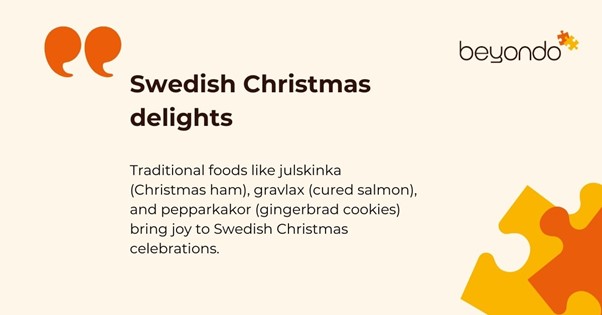 To read more, welcome to visit the website of Beyondo by clicking :
To read more, welcome to visit the website of Beyondo by clicking :
More
The State of European Tech Report 2024
More
The brochure “In case of crisis or war” delivered to over five million households in Sweden
Source of information: The Swedish Civil Contingencies Agency (MSB)
Published November 19, 2024.
The brochure “In case of crisis or war” has been distributed to over five million households in Sweden.
The Swedish Civil Contingencies Agency (MSB) has recently sent the latest version of the brochure “Ïn case if crisis or war” to every household in the country. In total 5.2 million households, have received the brochure over a period of two weeks.
The digital version was published on msb.se in October and had been downloaded approximately 55,000 times by the time the mailing of the printed version started. This was the fifth brochure of its kind to be published since the Second World War.
“Please read it, follow its advice, and save your copy for future reference. The brochure “In case of crisis or war” contains vital information that affects everyone living in Sweden who is 16 years of age or over. The national security situation has changed drastically, and we all need to strengthen our resilience to various crises and, ultimately, war,” said Mikael Frisell, Director General of the Swedish Civil Contingencies Agency (MSB).
“Sweden is one of the few countries in the world to communicate with its entire population about civil preparedness for crises and war by sending a brochure to every household. The new brochure sends an important message about the need to be prepared to defend our open society and our democracy,” added Christina Andersson, project manager for the brochure at MSB.
Greater Emphasis on Preparing for War
The new brochure covers more areas than the previous version, published in 2018, and places greater emphasis on preparing for war. It provides concrete advice on how to prepare for both crises and war and how to react in the event of a serious incident. The new brochure includes a number of bulleted lists and checklists to make it easier to digest the most important information. Among the new areas covered are:
- Advice on evacuation
- Advice on how to stop bleeding
- Advice for people who need extra support
- Advice on dealing with anxiety
- Advice on preparedness for pets
- Advice on how to speak to children about crisis and war
More














